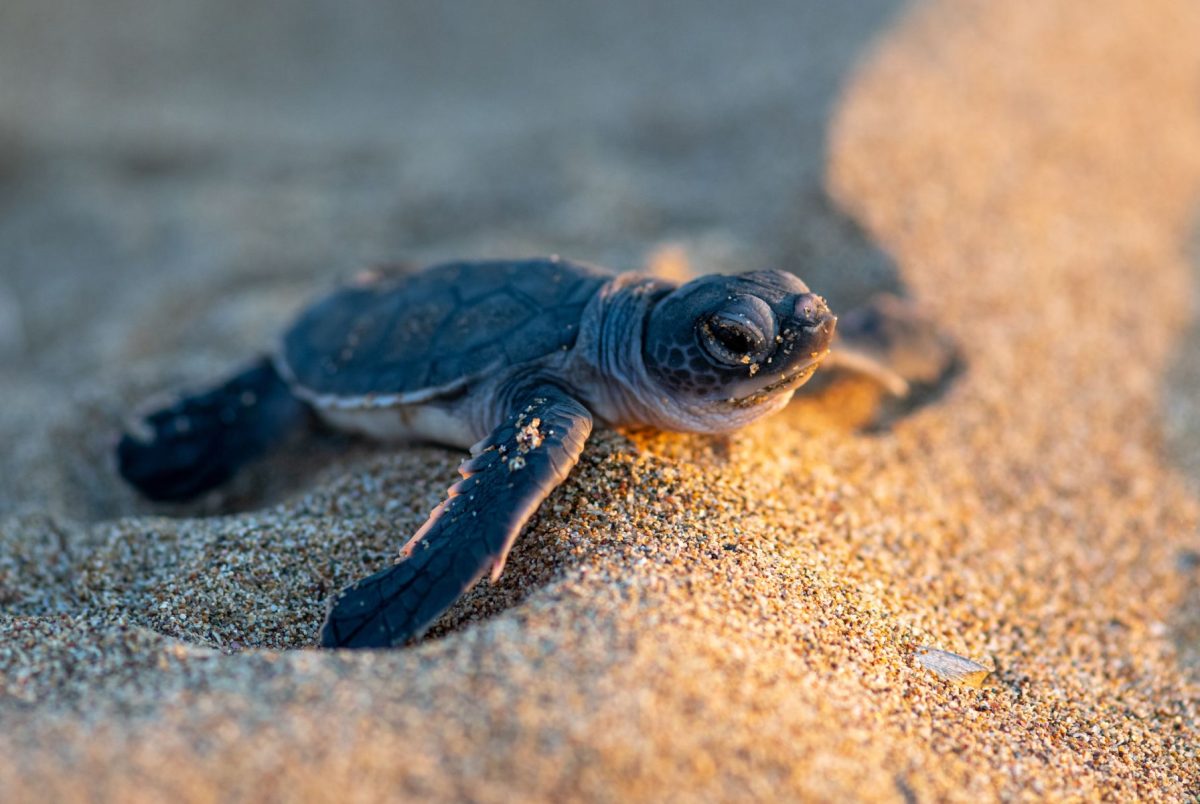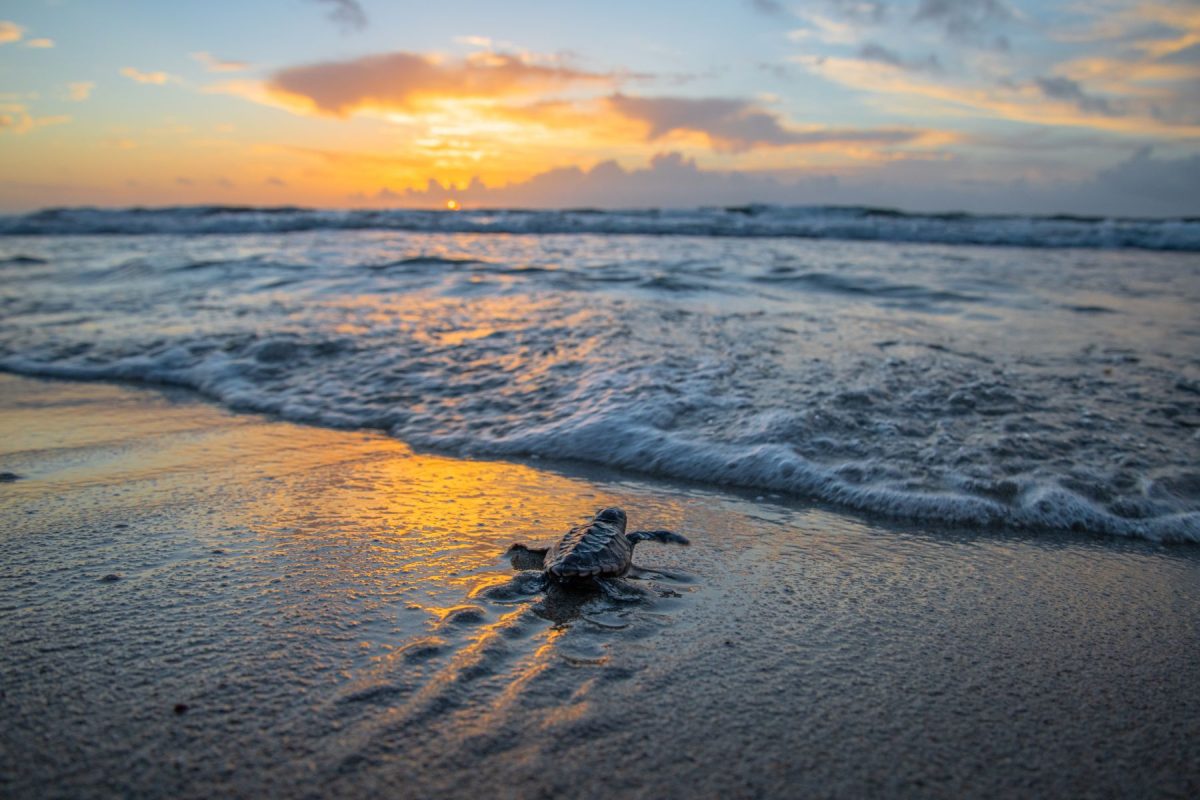The Pleasure Island Sea Turtle Project is a remarkable initiative dedicated to the conservation and protection of sea turtles along the Carolina Beach coastline.

We will delve into the various facets of this project, shedding light on the importance of sea turtle conservation, ways to get involved, and how visitors can support this noble cause during their stay in our Carolina Beach rentals.
Pleasure Island Sea Turtle Project
The Pleasure Island Sea Turtle Project is a community-driven effort, working tirelessly to safeguard the nesting and hatching process of sea turtles on the picturesque shores of Carolina Beach.
With a mission to protect and conserve sea turtles and their nesting sites, this non-profit organization brings together passionate volunteers, scientists, and conservationists who share a common goal – to ensure the survival and thriving of these ancient marine creatures for generations to come.
For several species of sea turtles, including the loggerhead, green, leatherback, and Kemp’s ridley turtles, Carolina Beach provides a vital nesting ground. These incredible creatures have been gracing the beaches of Pleasure Island for thousands of years, and they play a crucial role in maintaining the ecological balance of the marine ecosystem.
Facts About Carolina Beach Sea Turtles
Carolina Beach is home to a diverse array of sea turtles, each with unique characteristics and contributions to the ecosystem. Among them, the loggerhead sea turtle holds significant importance as it is the most common species found in this region.
Adult loggerheads weigh around 250 to 400 pounds and can grow up to three feet in length, showcasing their impressive size. Remarkably, female loggerheads return to the same beach where they were born to lay their eggs, a nesting behavior known as natal homing.
The nesting process itself is an awe-inspiring spectacle to witness. After a mature female loggerhead crawls onto the beach under the cover of darkness, she meticulously digs a nest hole using her powerful flippers.
This excavation process can take hours, and once completed, she deposits around 100 to 120 eggs into the sandy chamber. Once the nesting is done, she carefully covers the nest and returns to the ocean, leaving the eggs to incubate for approximately two months.
However, sea turtles face numerous challenges during the nesting process. Coastal development, pollution, and climate change are just a few of the threats that endanger their survival. Therefore, efforts like the Pleasure Island Sea Turtle Project play a pivotal role in monitoring and protecting these nesting sites.
Learn How to Help
The Pleasure Island Sea Turtle Project encourages everyone to get involved in their efforts to protect these magnificent creatures. There are numerous ways in which individuals can contribute to sea turtle conservation:
a) Nest Monitoring: Volunteers play a crucial role in monitoring sea turtle nests during the nesting season. By identifying and protecting these nests, volunteers ensure that they are not disturbed or damaged, increasing the chances of successful hatching. Monitoring involves keeping track of nesting activities and, when the time comes, watching for the emergence of hatchlings.
b) Beach Cleanups: Organizing and participating in beach cleanups helps create a safe environment for nesting sea turtles and hatchlings. Removing debris and litter from the beaches prevents turtles from getting entangled or ingesting harmful materials. These cleanups also contribute to overall beach preservation, benefiting both wildlife and beachgoers.
c) Education and Awareness: Spreading awareness about sea turtle conservation is vital. The project organizes educational programs and workshops to inform the public about the challenges faced by sea turtles and how everyone can contribute to their protection. By raising awareness, the project aims to foster a sense of responsibility and appreciation for these magnificent creatures.
d) Fundraising: The Pleasure Island Sea Turtle Project relies on donations to fund its various conservation efforts, including nest monitoring, rescue operations, and educational initiatives. Contributing financially to the project helps ensure its continued success in protecting sea turtles and their habitats.
Adopt a Nest

One of the most heartwarming ways to support the Pleasure Island Sea Turtle Project is by adopting a sea turtle nest. By adopting a nest, individuals make a direct impact on the preservation of these ancient creatures.
When someone adopts a nest, they receive updates on its progress throughout the nesting season, including when the hatchlings emerge. This unique experience fosters a personal connection with sea turtles and the ongoing conservation efforts.
The adoption process also serves as an educational opportunity. Participants gain valuable insights into the nesting habits and behaviors of sea turtles, understanding the challenges they face and the importance of preserving their nesting sites.
Sea Turtle Rescue & Rehabilitation Center
In collaboration with the local community and wildlife authorities, the Pleasure Island Sea Turtle Project runs a dedicated Sea Turtle Rescue & Rehabilitation Center.
This center serves as a sanctuary for injured or sick sea turtles found along the coastline. When sea turtles are injured due to boat strikes, entanglement in fishing gear, or ingestion of plastic, they are brought to the rescue center for immediate medical attention.
Trained professionals and volunteers at the rescue center provide medical care, rehabilitation, and nursing until the turtles are ready to be released back into their natural habitat. This process requires meticulous care and attention, as injured sea turtles often require extended periods of recovery before they can return to the wild.
The rescue and rehabilitation center also plays a crucial role in data collection and research. Scientists and biologists study the causes of injuries and illnesses to better understand the threats faced by sea turtles and to develop more effective conservation strategies.

About
The Pleasure Island Sea Turtle Project was founded with the mission of protecting sea turtles and their nesting sites along the Carolina Beach coastline.
The project’s core values include environmental stewardship, community engagement, and scientific research. Through the dedication of its volunteers and the support of the local community, the project continues to make a significant impact on sea turtle conservation.
Events
Throughout the year, the project hosts various events to engage the community and raise funds for sea turtle conservation. These events range from educational seminars to fun-filled Carolina beach activities, allowing people of all ages to participate actively in the preservation of these incredible creatures.
Events may include guided beach walks during nesting season, where participants have the opportunity to witness sea turtles nesting or hatchlings making their way to the sea for the first time. These experiences leave a lasting impression on attendees, fostering a deeper appreciation for the beauty and vulnerability of sea turtles.
Visit And Take A Tour
For those exploring things to do in Carolina Beach, taking a tour of the Pleasure Island Sea Turtle Project is an enriching experience. The guided tours provide insights into the ongoing conservation efforts, nesting sites, and the sea turtle rehabilitation center.
Visitors leave with a deeper understanding of the critical role they can play in safeguarding these precious marine species. By participating in a tour, visitors not only gain knowledge about sea turtle conservation but also support the project through tour fees, which directly contribute to its initiatives.
Additionally, the tour experience often inspires visitors to spread the message of sea turtle conservation to their friends and family, further amplifying the project’s impact.
Plan Your Next Visit!
Are you ready to explore the world of sea turtles through the Carolina Beach Sea Turtle Project? Browse our entire selection of vacation rentals and start planning your trip today!
Stay With Victory Beach Vacations
There is no better lodging choice than staying in Victory Beach Vacation home rentals when traveling to Carolina Beach and taking part in the Pleasure Island Sea Turtle Project. Victory Beach Vacations, located in the center of this charming seaside town, provides a selection of spacious and opulent vacation accommodations, making it the ideal home base for a memorable sea turtle conservation adventure.


